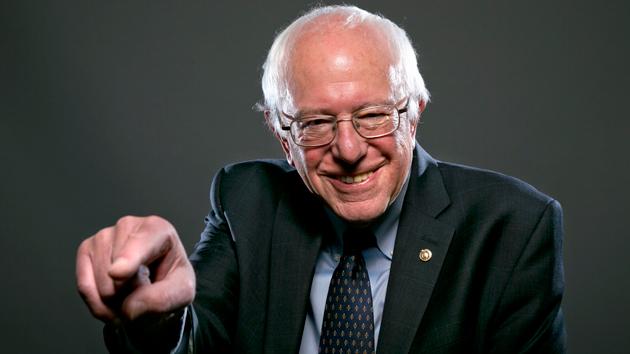Tuition prices are “feeling the Bern”
The unbelievably high prices of college education has become an important issue for the younger generation of Americans in this election season. Bernie Sanders, one of the front runners of the Democratic Party, has promised that if elected he would make college tuition free by imposing a tax on Wall Street speculation, or the practice of engaging in risky financial transactions in an attempt to gain profit, to fund it. This has made Sanders very popular among the younger demographic and as a result is neck to neck in the polls with the once unstoppable Hillary Clinton.
At one point in our history, college tuition was so cheap it was practically free to go to college. The 1862 Morrill Act established land-grant public colleges and universities on a tuition free basis. For nearly a century after this law was passed, many public colleges and universities either charged no tuition or a small fee for attendance. The State University of New York (SUNY) system, one of the largest in the nation, was tuition free until 1963. The University of California system had been tuition free for state residents from its foundation in 1868 until the 1970’s.
Starting around the 1980’s, this began to drastically change. “When my dad went to college in the 1980’s, he only had to pay $1600 a semester [$3,500 when adjusted for inflation].” says Manik Trikha (12). “Today at the University of Illinois, for example, you’re paying more than $20,000 a year even though in-state tuition is supposed to be the least expensive.”
Between 1978 and 2013, American college tuition reportedly rose by 1,120 percent. The reasons for this spike in college tuition is because of conservative budget cuts, in addition to a larger percentage of the population attending college. Today in the SUNY system, the government only provides 30% of funding, while students have to pay for the remaining 70%. In the country as a whole, state funding has decreased 16% since 2008 alone, and it continues decrease. With these sharp rises in tuition prices, more kids are resorting to student loans that cause them ensuing years of debt, and some decide it is better not to go to college at all.
As a result of these obstacles, more Americans are demanding a tuition-free system in the public college system. It has become a topic of heated debate, with many liberals now saying a free system is necessary for a strong economy in the future. Bernie Sanders’ main argument is that a college education is the equivalent to what a high school education was 50 years ago. As jobs become increasingly more specialized, it is important that Americans get the best education possible.
In addition to making college tuition free, Sanders wants to cut student loan interest rates that are prolonging students’ massive debts from college. He also plans on making sure all room and board, books, and living expenses will be covered by government financial aid assistance all while tripling the amount of work study opportunities for undergraduates.
As great as all of this sounds, it comes with an enormous price tag. It will cost upwards of 75 billion a year, but Sanders claims it will mostly come from taxes imposed on Wall Street speculation. Nonetheless, he doesn’t deny that there will be increases in income taxes, but affirms that it will make up for the tens of thousands of dollars it costs to attend college now.
On the other side of the spectrum, conservatives aren’t even addressing the problems with the unaffordability of college education. The subject has seldom been brought up in any of the 11 Republican debates. Most believe that free college tuition would be too expensive to maintain. In addition, conservatives argue that in order to earn the economic rewards and opportunities that a college education offers, the students should support the cost themselves.
“I think the price should be lowered, but I don’t think it should be free. There’s supposed to be something to drive you to study hard.”, emphatically states conservative Daniel Tomback (12). “If you want college to be free, put four years of life into the military, work hard, get something done, then the government will pay for it just like that.”
While there is still heated debate about the possibility of executing this system in America, it has already been implemented in countries like Denmark, Sweden, and Germany. In fact, over 10,000 students in each year move from the U.S to Germany to save money on their education. As a student in Germany, you simply pay a fee of $250 a semester to cover administrative costs and support student unions. In many instances, this fee also tends to cover textbooks and public transportation.
As other countries provide a free college education, millions of Americans are struggling to afford it even years after they’ve graduated. No matter where you stand in this year’s election, the unaffordability of higher education should be a concern to you because it is inhibiting the next generation’s potential, and thus hindering America’s future greatness.

